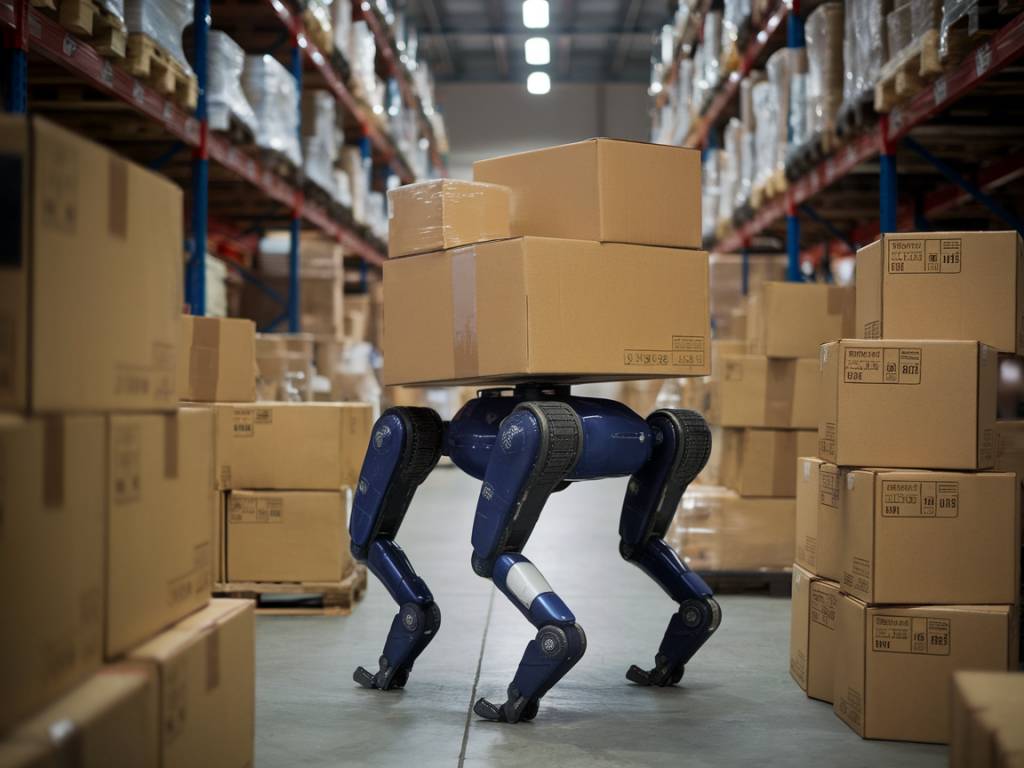In a world where logistics is increasingly driven by technological advancement, one might find it amusing to picture the next big innovation galloping into the warehouse on four legs. Indeed, the quadruped robot is no longer just the stuff of science fiction—it’s a tangible, practical solution poised to transform the logistics sector. But what exactly are these mechanical marvels, and how are they reshaping the industry?
The Rise of the Quadruped Robot
Quadruped robots, inspired by the gait and balance of four-legged animals, are designed to navigate complex environments with ease. Unlike their wheeled counterparts, these agile creatures leap over obstacles, climb stairs, and move through rugged terrains. It’s no surprise they’re becoming the darling of the logistics world. Imagine a busy warehouse where these robots seamlessly flit between aisles, tasked with retrieving goods from the top shelf with precision. Makes forklifts look positively pedestrian, doesn’t it?
Real-World Examples of Quadruped Utility
One of the most prominent names in the field is Boston Dynamics, with their Spot robot. This robotic canine has already proven its mettle across various industries. In logistics, Spot has been integrated into warehouse operations, conducting inventory management tasks, and performing inspections in areas unsafe for humans. The nimbleness it displays in circumventing obstacles not only increases efficiency but also enhances safety standards.
Another notable mention is ANYbotics with their ANYmal robot. Designed for inspection tasks in energy and industrial sites, its potential in logistics can’t be overstated. By handling tasks that require mobility over uneven surfaces, these robots are bridging the gap between current capabilities and future needs.
Why Adopt Quadruped Robots in Logistics?
- Enhanced Efficiency: Quadruped robots can work around the clock without fatigue, increasing warehouse throughput and reducing operational costs over time.
- Improved Safety: By handling hazardous environments or situations, these robots minimize risks to human workers, leading to fewer accidents and more reliable operations.
- Versatility: Their ability to carry payloads, manipulate objects, and navigate complex terrains gives them an edge over traditional robots in dynamic settings.
Challenges on the Road Ahead
As with any disruptive technology, there are hurdles to overcome before quadruped robots become a staple in logistics. First up is cost. These high-tech pieces of equipment come with a hefty price tag, challenging smaller operations to balance investment against potential returns. Furthermore, incorporating quadrupeds into existing systems requires significant training and a cultural shift in how logistics tasks are approached.
Another consideration is battery life. While impressive strides have been made in robotic engineering, the energy consumption of such machines poses limitations on their operational duration. However, ongoing research and development are paving the way for longer-lasting power solutions.
Future Prospects
The future looks promising for quadruped robots in logistics. With evolving AI capabilities, these robots are expected to take on even more complex tasks. Vision and recognition technologies are rapidly advancing, meaning these machines could soon identify and sort goods without human intervention. Picture a warehouse where the rhythm of logistics is maintained by a symphony of mechanical paws—a fascinating dance of efficiency and technology.
Moreover, as machine learning algorithms become more sophisticated, quadrupeds will learn and adapt to their environments, predicting patterns, and optimizing their routes. Essentially, they will not just perform tasks but anticipate needs, actively contributing to smarter warehouse management.
Embracing the Quadruped Revolution
Logistics leaders with a penchant for innovation may wish to embrace these robotic companions sooner rather than later. The journey may require initial investments and adjustments, but the potential for increased safety, efficiency, and adaptability positions quadruped robots as one of the most exciting developments in the logistics landscape.
As we charge ahead into this four-legged future, one might ponder: will the warehouse of tomorrow even require human intervention, or will the patter of robotic feet mark the rhythm of productivity? The answer, like with any leap into the future, remains just over the horizon, inviting us to continue exploring.
